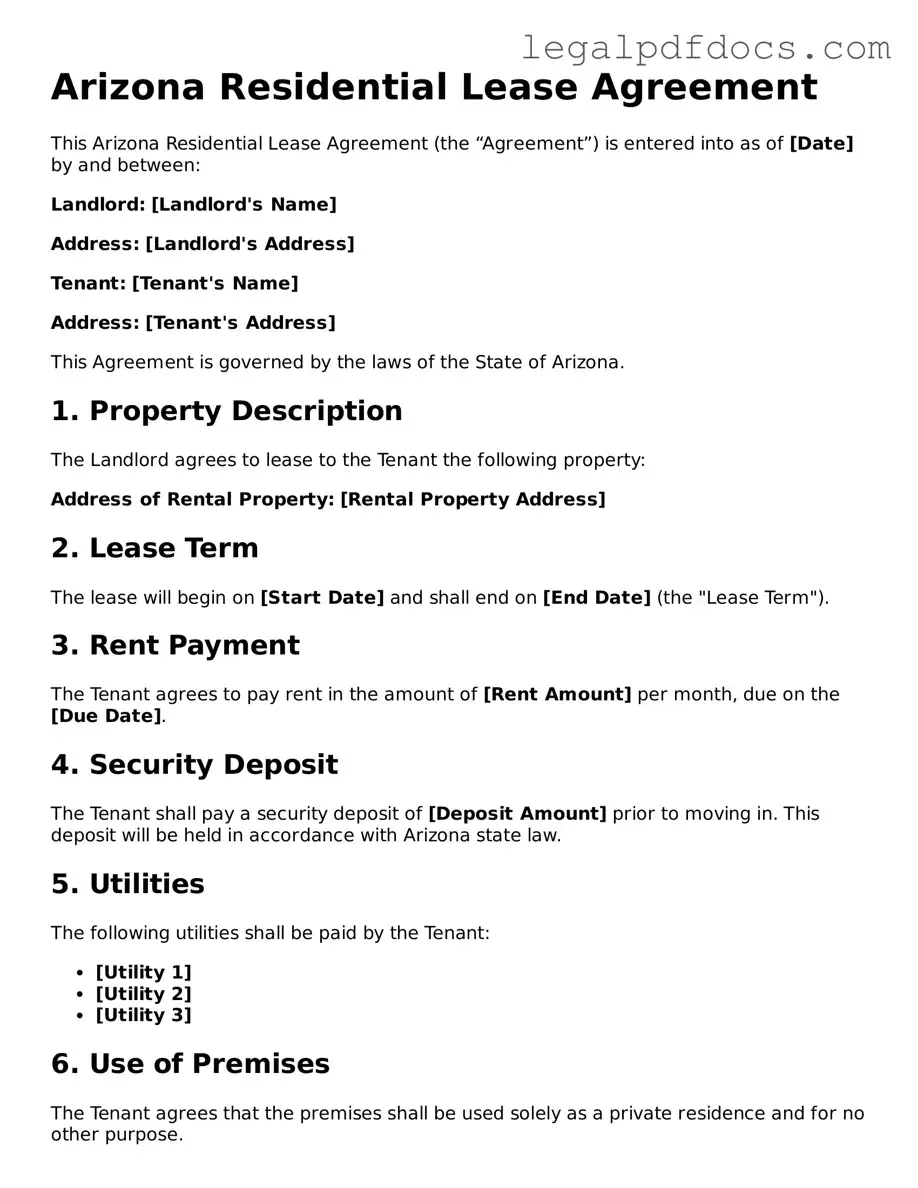Official Residential Lease Agreement Form for Arizona
The Arizona Residential Lease Agreement is a legal document that outlines the terms and conditions between a landlord and tenant for renting residential property in Arizona. This form serves as a vital tool for both parties, ensuring that their rights and responsibilities are clearly defined. Understanding this agreement is essential for a smooth rental experience, so take the first step by filling out the form below.
Open Residential Lease Agreement Editor Here
